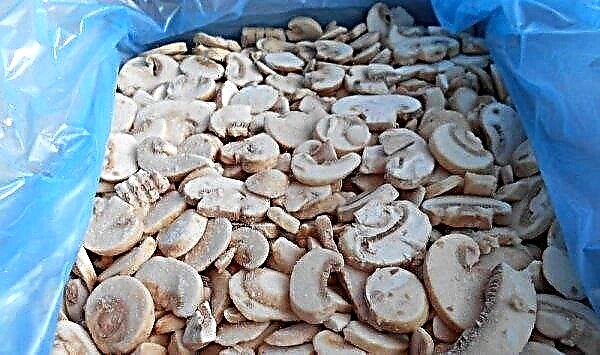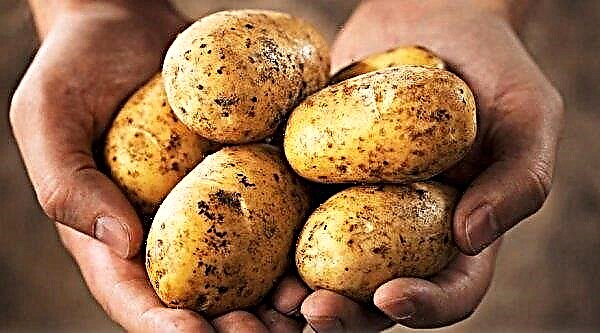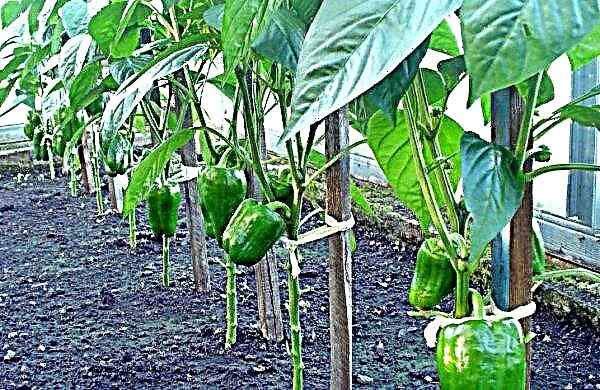Tulips are often associated with spring holidays - March 8, the last bell at school. In order for these bright flowers to give a festive mood every spring, in the summer you need to work a little. Learn from this article the rules for handling and storing tulip bulbs after digging.
Processing tulip bulbs after digging
The need to dig tulip bulbs is due to the biological processes taking place in them. A new flower bud, as well as the embryos of future babies, are formed during summer dormancy at high temperatures. In rainy and cool summers, the onion in the ground can rot or become infected with a fungal infection. And if she was not warm enough, then the flower that she will release is likely to lose her decorative characteristics.

Tulips have one feature: their bulbs go deeper into the soil every year. After a few years, they will be so deep that the flower arrows, if they form, they will not be able to break through to the surface. Without digging, tulips simply cannot bloom. One more regularity is known to all flower growers: if flowers are not replanted, the soil not only depletes, but also accumulates the spores of fungi characteristic of this culture.
Tulips need to be dug up annually to:
- they did not become smaller and did not lose their beauty;
- bloomed every year;
- not sick.
Did you know? Tulips are characterized by the flowering of one flower on the stem. But there are varieties in which 4 buds are tied at once on one stem.
And the correct processing of dug bulbs will protect the planting material during storage from infections, feed them with nutrients, accelerate growth and ensure lush flowering in the new season.
When they dig up tulips
Gardeners have different opinions on whether to dig tulips every year: some consider it necessary, others do it every 2-3 years. Both points of view are correct depending on the purpose of growing flowers and on weather conditions in the region. Damp summer weather creates unfavorable conditions for bulbous nests in the ground, and they need to be dug, dried and warmed up.
If the summer is hot and dry, then they can sit in the ground a couple of years. Decorative beds from this will not suffer. If the flowers are grown for sale, then it is advisable to excavate annually. This will guarantee a regular harvest of large beautiful flowers that have not lost their varietal characteristics.
Important! Dry sunny weather is suitable for digging up tulips. If it has recently rained, then we must wait until the earth is completely dry.
Rhizomes should be dug up in the summer, in June - July. It depends on the precocity of the variety and the weather. The exact time will tell the plants themselves. If the leaves turn yellow and become brittle, and the stem, on the contrary, has become soft and flexible, then it's time to dig. At this time, the tuber is covered with brown scales. It is important not to miss this moment, it usually occurs about a month after the end of flowering. If you start digging earlier, the bulbous nests will not have time to mature enough.
And with late digging, when there are no more leaves and stems, you can damage the rhizomes or not at all. Also, lying in the ground, they can suffer from rodents, catch an infection or begin to burst from excess moisture. Such planting material is poorly stored.
How to process bulbs after digging
Preparation of a dug bulbous crop for storage takes place in several stages:
- Drying out. Rhizomes are laid out in boxes with holes in 1-2 layers or on a floor under a canopy, protecting from rain and sun, or in a warm, well-ventilated room. Drying lasts several days (2-7 days).
- Cleaning. Dried bulbs are easily cleaned from the remains of the earth, roots, upper exfoliating scales. At this stage, the bulbous nests are easily divided into separate tubers and children. The purified seed is washed under running water. Now, instances damaged by mold are clearly visible. They need to be rejected.
- Pickling. Pure bulbs are dipped for half an hour in a pink solution of potassium permanganate. This is prevention from rot and fungal infection, as well as vitamin charging, which promotes the rooting and development of plants. If mold spots have been noticed on some bulbs, it is recommended to use fungicidal preparations with a more effective action (Fundazol, Maxim, Vitaros and others) according to the instructions.
- Drying again in the open air. Dry and clean bulbs are laid for storage.

Bulb sorting
Cooked tubers need sorting. They need to be carefully examined and discarded instances of irregular shape and with the slightest signs of mold damage, which were not seen before.
Did you know? In the first half of the XVII century. tulips were very much appreciated in Europe. A bouquet of these spring flowers was more expensive than building a new house.
The remaining beautiful bulbs of the correct form are sorted by size:
- small - 1.5 cm in diameter;
- medium - 3 cm;
- large - 4 cm or more.

This sorting of seeds by size is important for proper planting. Small and medium tubers will not give flowers in the first year, so they are best grown not in a flower bed, but somewhere in a secluded but sunny place.
How to store processed onions
In the proper storage of tulip tubers, several factors play an important role: packaging, room, temperature and humidity. The container must be well ventilated, that is, let air through so that the contents do not suffocate. It should also be shallow; tubers are laid in it in 1-2 layers.
For this purpose fit:
- wooden plank boxes;
- plastic boxes for vegetables (with low sides and openings);
- cardboard boxes (only for summer storage);
- wicker baskets.

Storage should be dry but well ventilated and darkened.
The room is selected depending on when the planting material will be stored:
- for summer storage - a warm room (attic, upper floor of a summer house);
- for the winter - a cool room (basement, cellar, refrigerator).

As already mentioned, the laying of a flower bud occurs during a summer vacation, in which the bulb should warm up well, so in the summer, the summer temperature should be kept at + 25 ... + 30 ° С. At higher temperatures, planting material will dry out; at lower temperatures, it will become non-fertile. By the end of summer, the temperature should drop to + 20 ° C, and in autumn - to + 15 ... + 17 ° C. If the bulbs will be planted in the spring, then for the winter they need to be moved to a room with a stable temperature of + 15 ° C (basement). In a warm room they will begin to germinate early, and in a very cold room they will simply freeze.
Important! A small number of tulip tubers will be perfectly preserved in the winter on the bottom shelf of the refrigerator. In this case, each copy should be wrapped in paper.
Humidity is another important factor for storing tulips. If the room has very dry air, the tubers are wrinkled, the gas exchange process will be disrupted in them, which, in turn, will harm the formation of healthy kidneys. In the case of high humidity, the bulbs will begin to germinate, without waiting for planting, and rot. In this regard, it is necessary to maintain humidity of 60–70% in the storage. If there is a smell of mold, and characteristic spots on the bulbs, then the room should be well ventilated, and the infected tubers should be destroyed. Immediately before planting in the soil, it is desirable to increase the moisture content to 100%.
From the experience of many gardeners, it is clear that the annual digging of tulips is very effective. With proper processing and optimal storage conditions, each bulb gives a large beautiful flower, as well as an increase in healthy children.












